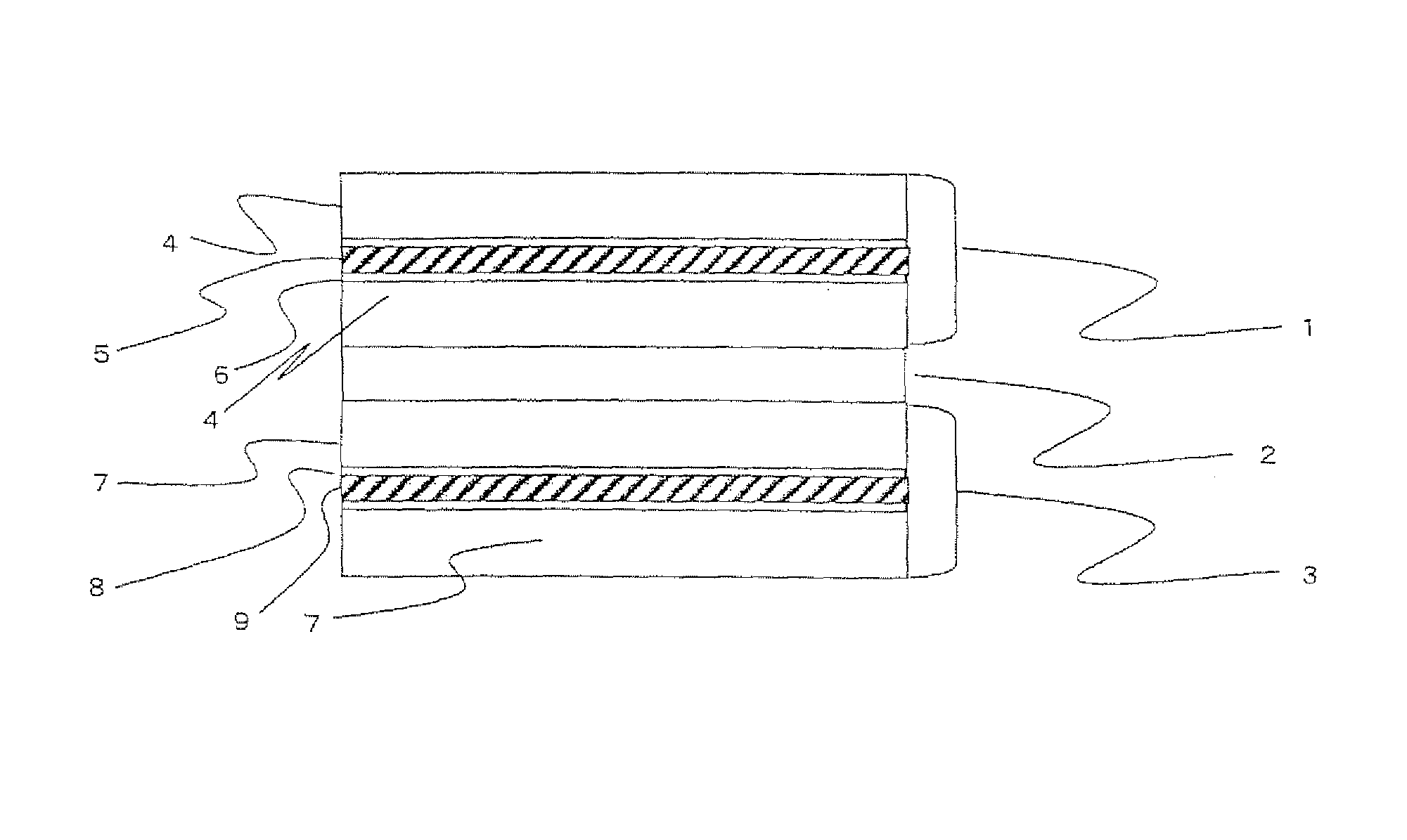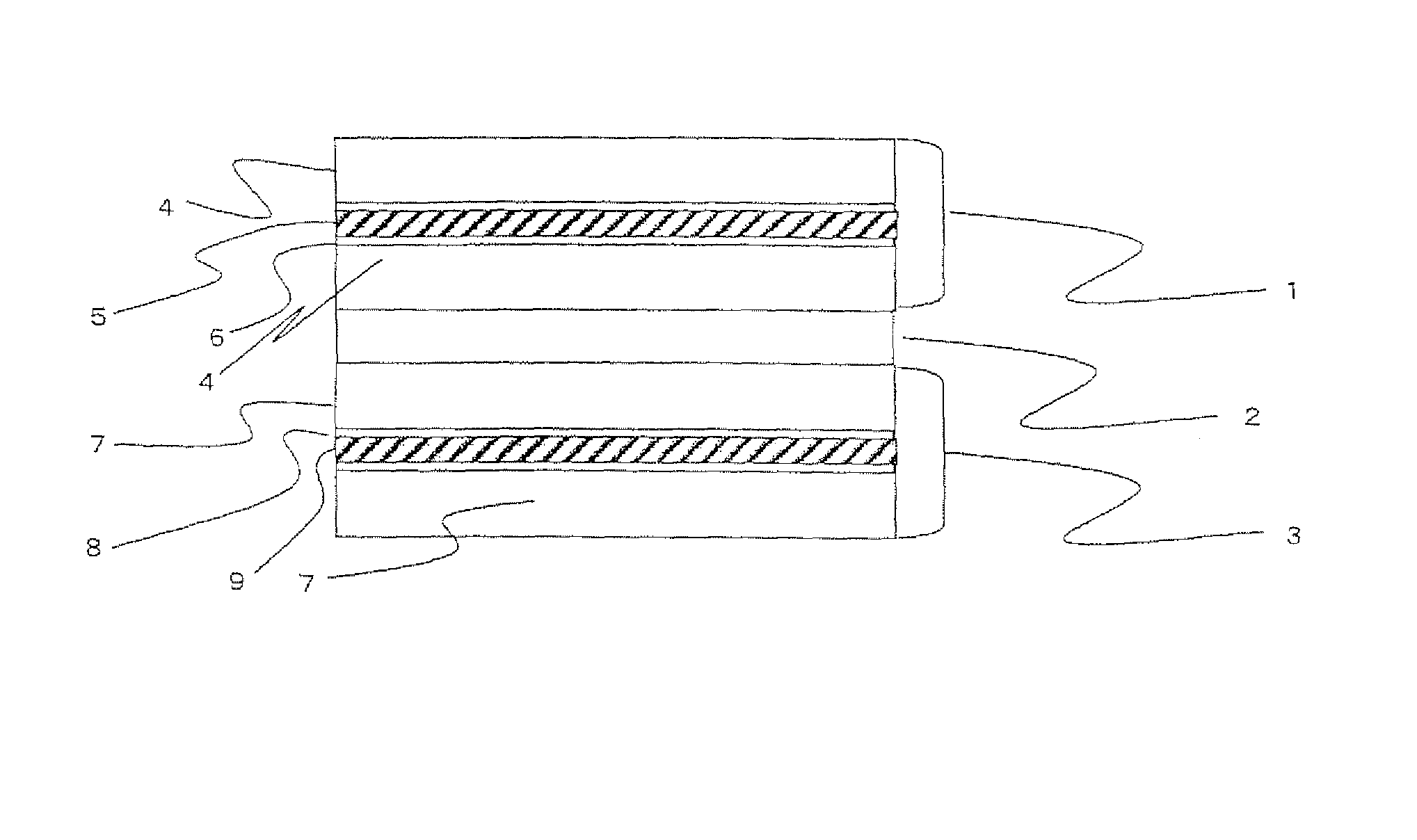Nonaqueous secondary battery
a secondary battery and non-aqueous technology, applied in the direction of cell components, final product manufacturing, sustainable manufacturing/processing, etc., can solve the problems of internal short circuit, limited temperature rise in the battery, and problems such as blowout or fire at the worst, so as to improve safety, prevent internal short circuit, and prevent internal short circuit.
- Summary
- Abstract
- Description
- Claims
- Application Information
AI Technical Summary
Benefits of technology
Problems solved by technology
Method used
Image
Examples
example 1
[0050]As an active material in a positive electrode, 100 parts by weight of LiCoO2, 10 parts by weight of acetylene black (DENKA BLACK: manufactured by DENKI KAGAKU KOGYO KABUSHIKI KAISHA, Japan) as a conductive member, 10 parts by weight of PVDF (KF polymer manufactured by KUREHA CORPORATION, Japan) as a binder and N-methyl-2-pyrrolidone (referred to as NMP, hereinbelow) as a solution were used to make a paste for preparing a positive electrode. As shown in FIG. 1, this paste was applied to both sides of the current collector comprising an aluminum conductive layer of 1 μm in thickness on both sides of a biaxially oriented polypropylene film of 20 μm in thickness (a resin layer of Pylen® manufactured by TOYOBO CO., LTD, Japan, having a heat deformation temperature of 140° C. and a coefficient of thermal shrinkage of 2.3% at 120° C.). It was sufficiently dried and pressed with a hydraulic press to obtain a positive electrode (the size of the coating of the positive electrode: 30 mm ...
example 2
[0061]A battery was manufactured with the same method as in example 1 except that the current collector for the positive electrode was changed to an aluminum foil (20 μm in thickness). The current characteristics of the obtained battery were measured. The battery was subjected to the nail penetration test to observe behavior and a surface temperature of the battery.
example 3
[0062]A battery was manufactured with the same method as in example 1 except that the current collector for the negative electrode was changed to a copper foil (12 μm in thickness). The current characteristics of the obtained battery were measured. The battery was subjected to the nail penetration test to observe behavior and a surface temperature of the battery.
PUM
| Property | Measurement | Unit |
|---|---|---|
| linear coefficient of thermal shrinkage | aaaaa | aaaaa |
| thermal deformation temperature | aaaaa | aaaaa |
| thickness | aaaaa | aaaaa |
Abstract
Description
Claims
Application Information
 Login to view more
Login to view more - R&D Engineer
- R&D Manager
- IP Professional
- Industry Leading Data Capabilities
- Powerful AI technology
- Patent DNA Extraction
Browse by: Latest US Patents, China's latest patents, Technical Efficacy Thesaurus, Application Domain, Technology Topic.
© 2024 PatSnap. All rights reserved.Legal|Privacy policy|Modern Slavery Act Transparency Statement|Sitemap


